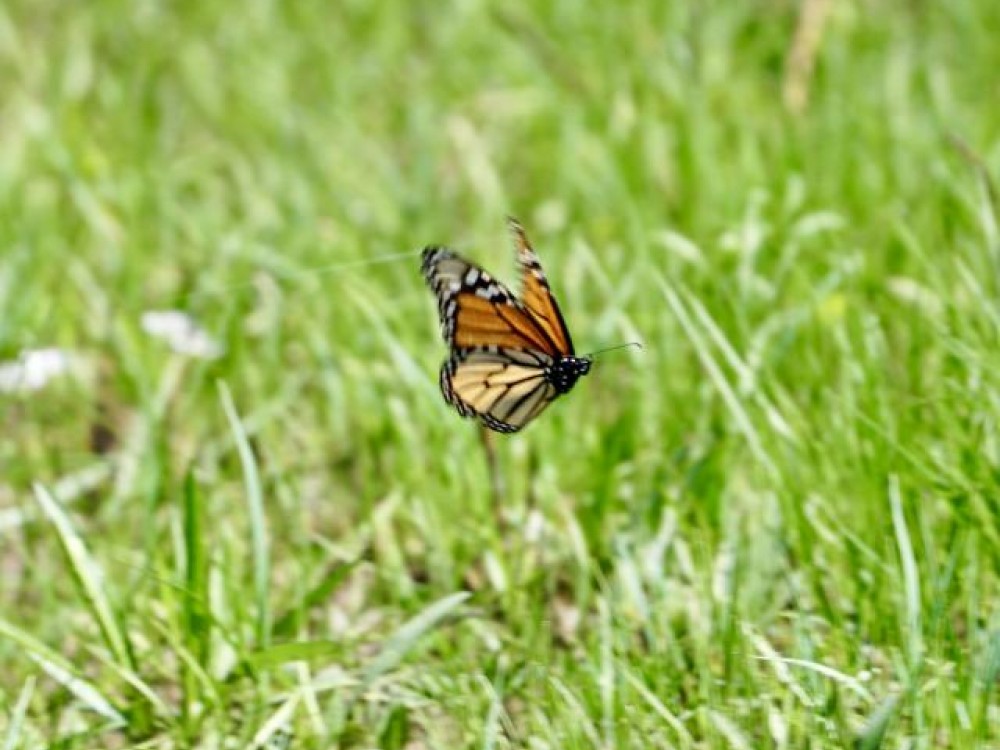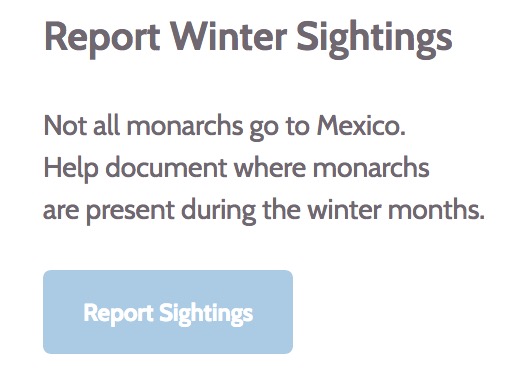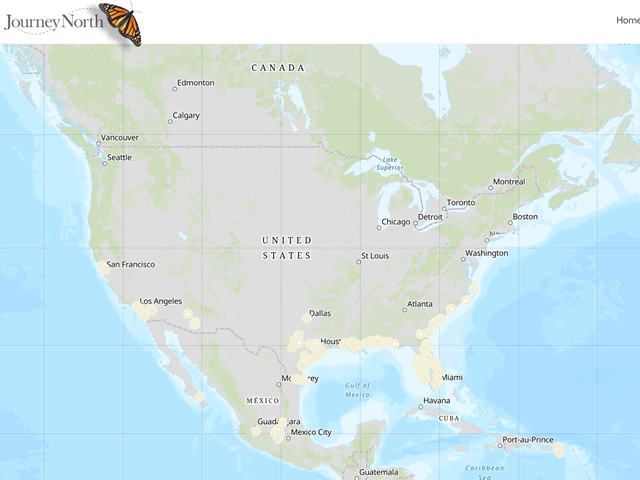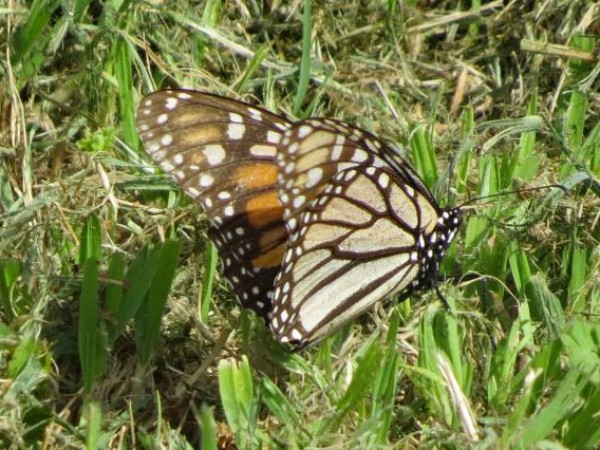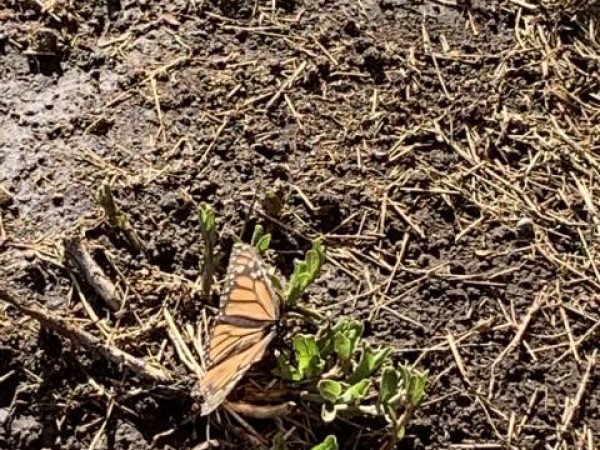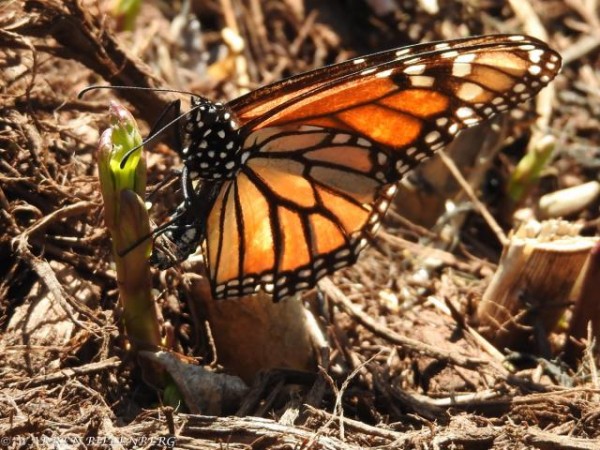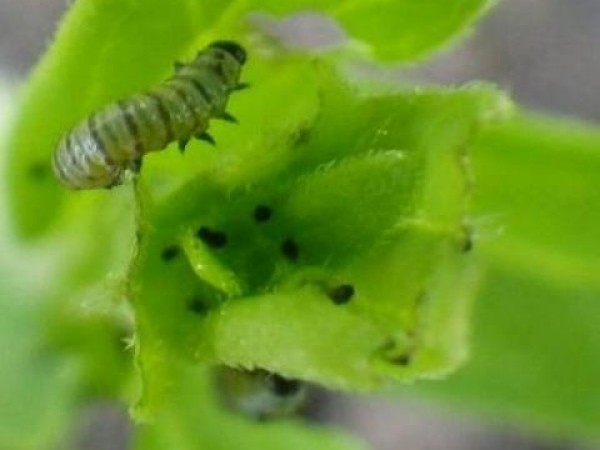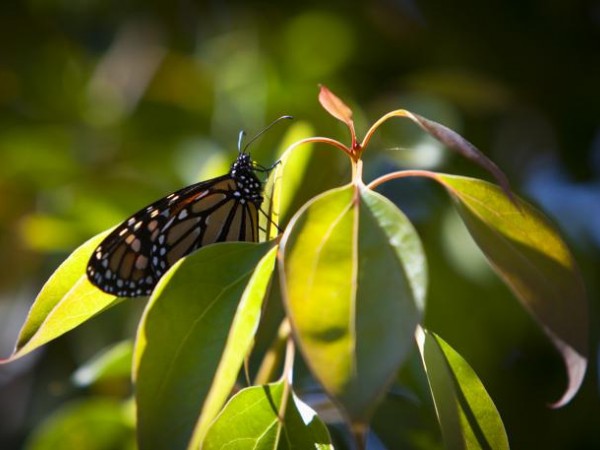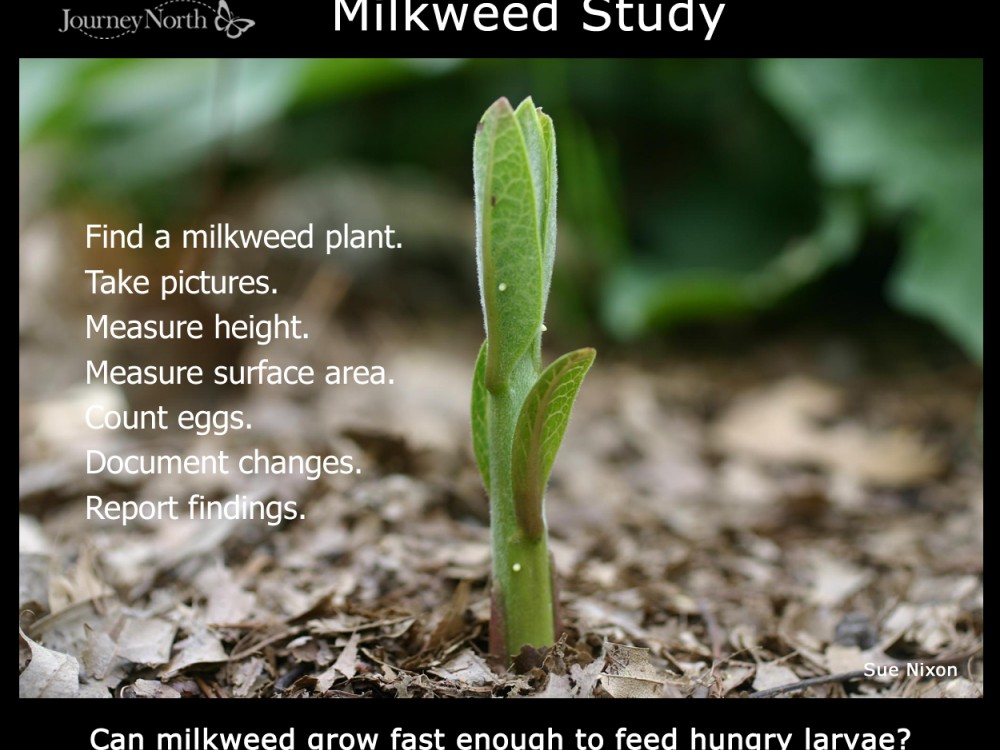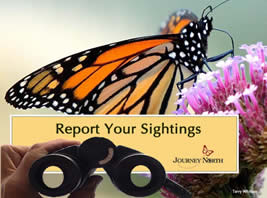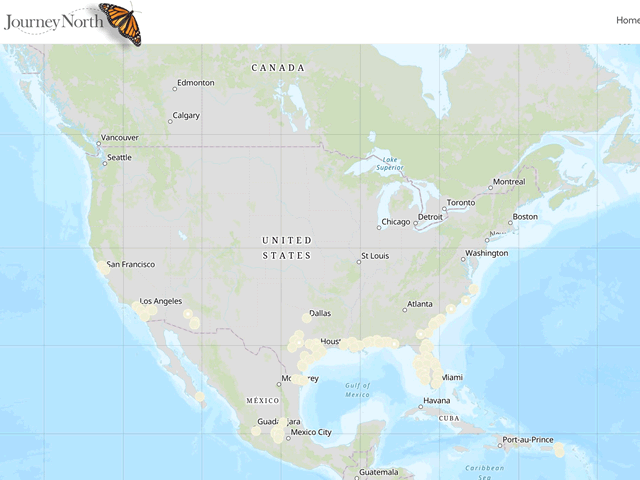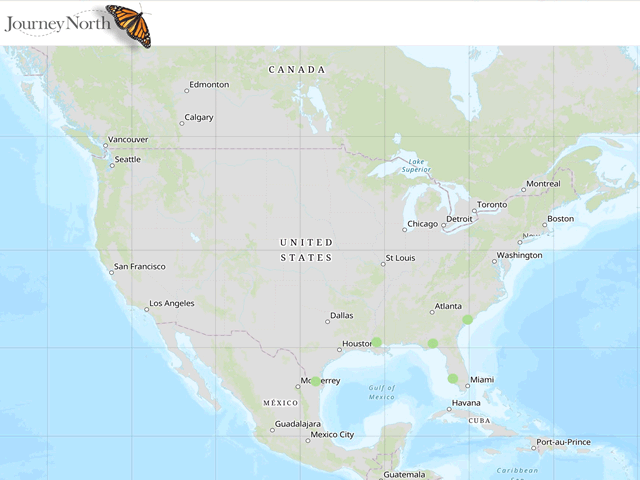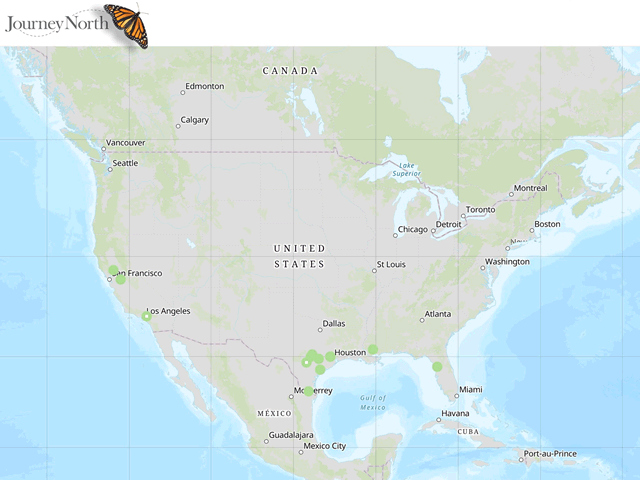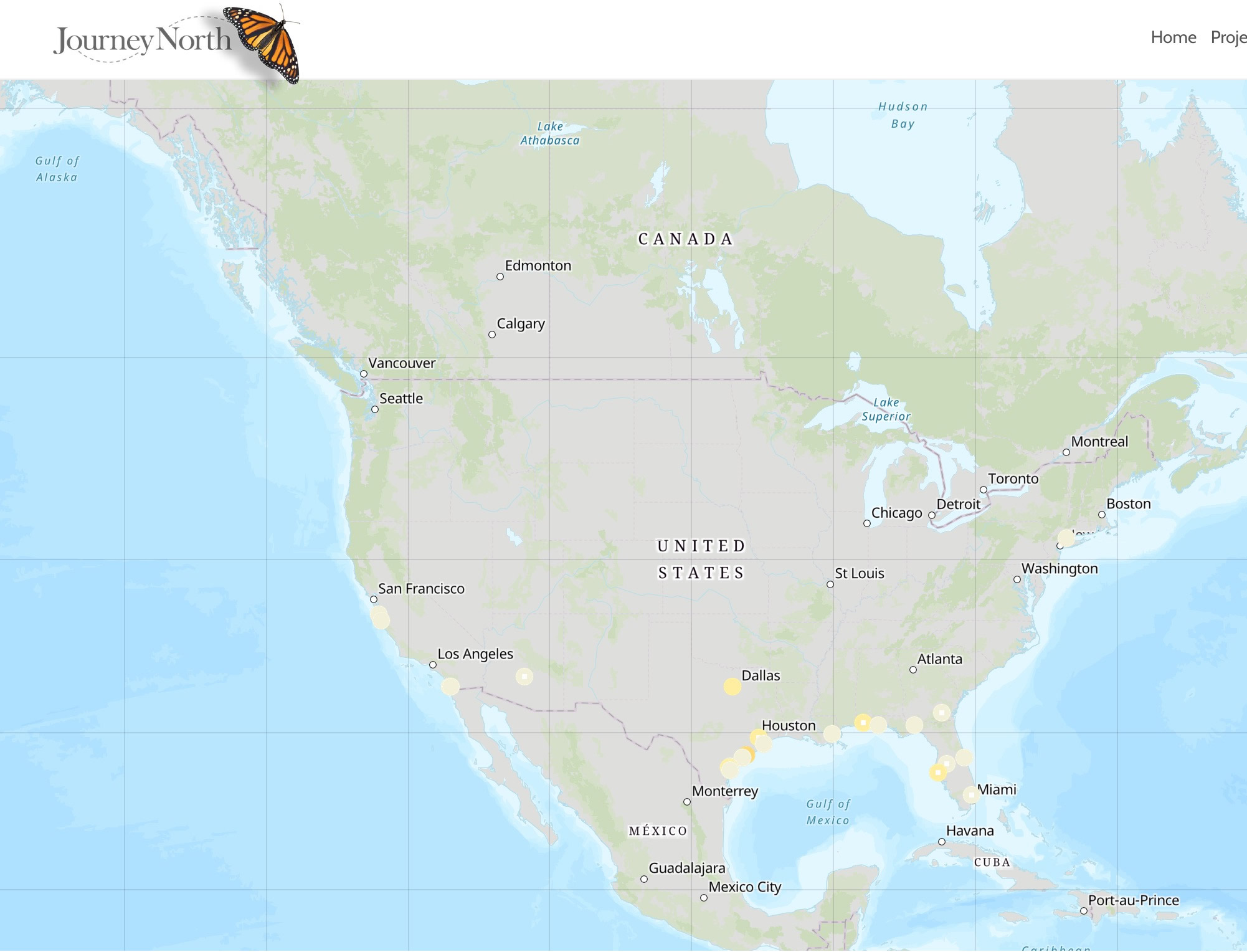Monarchs Moving Across Oklahoma Into Kansas and Missouri
Eastern Population of Monarchs
Monarchs Moving Across Oklahoma Into Kansas and Missouri
Last week, Journey North citizen scientist data indicated that Monarchs were poised to enter Kansas. This week, they have arrived. There have been a flurry of reports from Oklahoma as Monarchs are laying eggs and moving into Kansas and Missouri (latitude 38°N). Don't forget to report your first sightings of Monarch eggs.
Along the east coast, Monarchs have been sighted in northern Virginia and Maryland (latitude 39°N).
Many Journey North citizen scientists are expressing concern -- is milkweed emergence keeping pace with the advancing migration of Monarchs?
From Bluff City, KS: Leah reported her first Monarch. (04/09/2020)
From Helena, OK: Gean reported "a faded female laying many eggs on my milkweed sprouts." 04/07/2020
From Maryville, TN: Warren "observed monarch laying eggs on milkweed and other plants as well as pieces of mulch and old stems. (04/03/2020)
From Texarkana, AR: Anita submitted this report: "Monarch larva are emerging on tropical and tuberosa milkweed in our flower beds.We counted over 50 eggs at one time and have seen female monarchs laying more eggs since then. Like in many places the females got here and laid eggs before enough milkweed had grown large enough to feed all the larvae." (04/08/2020)
From Ashburn, VA: Meg saw her first Monarch "Flying through the yard." (04/04/2020) Link to report
From Columbia, MD:Catherine "happened to look out my window and saw the first monarch of the season. It was flying a bit low, and continued until out of sight. (04/08/2020) Link to report
Western Monarch Population Migration News
Patiently Waiting
Gail Morris notes this week: "Warm, sunny weather welcomed monarchs throughout their spring migration range this week. But monarch sighting reports still indicate monarchs are primarily in the warmer coastal region of California and the southwest. In the cooler southwest regions, milkweeds are emerging and ready for monarchs to fly their way!...We should begin to see reports of monarch larvae and even fresh and new monarchs soon...Spend time each day outside in your own yard watching. You’ll be amazed at the activity that is still happening all around you. Isolation is hard, but we can still explore nature’s beauty unfolding around us this spring season. Take your camera along and let us know what you find!"
Read more of Gail Morris’ article: Western Monarchs 2020 Spring Report #6
Consider Planting a Pollinator Garden
We can all plant a garden (big or small) in our backyards or even just a planter on our porch. Pollinator gardens could have plants that will be able to host Monarch eggs and feed the larvae. These plants can be thought of as "caterpillar plants". To ensure Monarchs survival, more milkweed is needed on the landscape. But don't forget that Monarchs need nectaring resources too. These plants can be thought of as "nectar plants".
Journey North partners have some great materials on planting milkweed. Monarch Watch shared a blog message that there is some milkweed available through their Milkweed Market. Explore this link via Milkweed Market. Check out Monarch Joint Venture's Milkweed & Wildflower Vendor Map.
Looking For Fun Activities To Do At Home?
Look no further! Journey North has many resources for anyone with a curious mind. This week we again feature the amazing connections between Monarchs and Milkweed.
Monarchs & Milkweed Spring / Summer Maps
After FIRST sightings, please report:
- Monarch Adult Sighted
- Milkweed Sighted
- Monarch Egg Sighted
- Monarch Larva Sighted
- Monarch (OTHER observations) *including behaviors such as mating and nectaring

